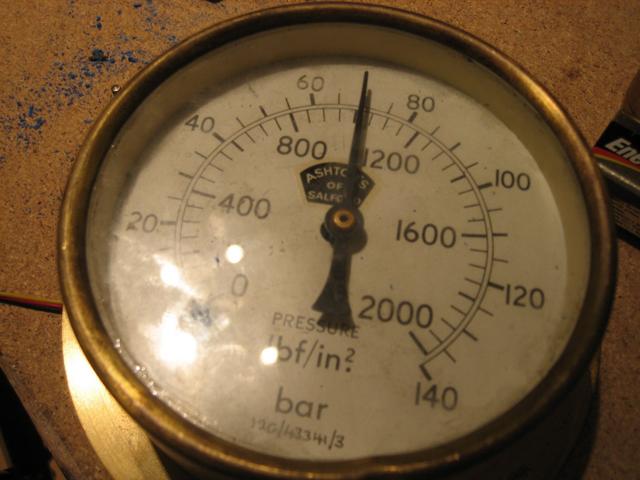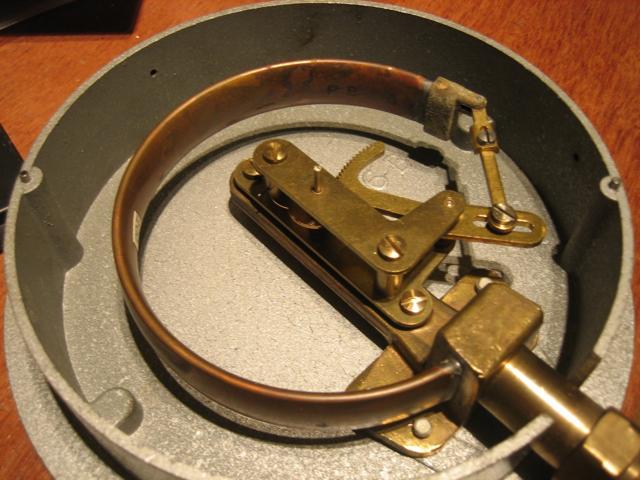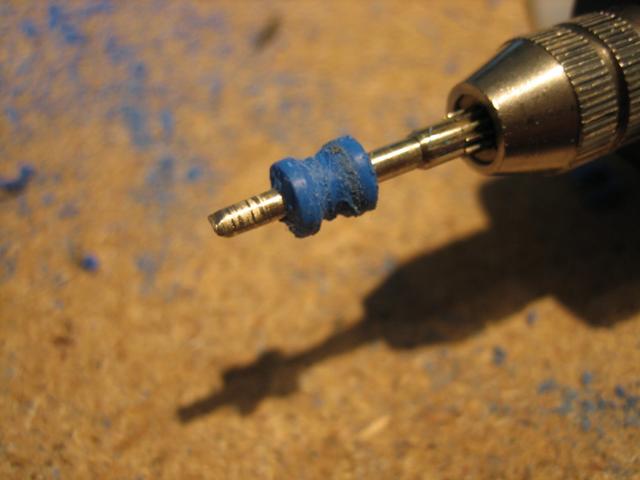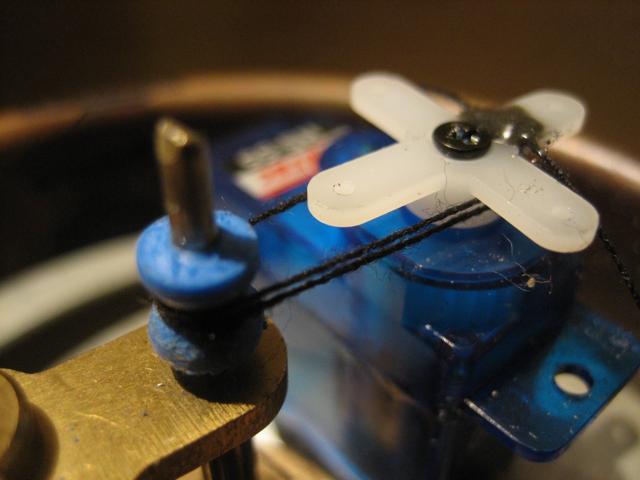

Earlier this year I made a Load average meter out of an old ammeter. But I've decided I want to use some even older technology, so I've been refitting some pneumatic pressure gauges so I can display information with them.

I got a load of old gauges from Empire Exchange, the little Mancunian goldmine that supplied the ammeter. Opening these reveals an arc-shaped copper pipe which deforms when inflated, driving a lever and gear which moves the needle. Now, ideally, I would control these using a computer-controlled variable pressure pneumatic source, but I don't have pneumatic mains in my house (not at 140 bar, anyway), so I've had to go for an electro-mechanical solution. It's a shame to cut the proper workings out of them, but I don't think they would have gotten any better life in their present form.
A servo motor is the obvious choice to get a controlled rotational movement. However, most servos only have a range of 180°. I need a range of 270° to use this meter properly. You can get servos with a greater than 180° range but they are quite rare, especially in the small sizes I need to fit into the gauge's body.

In order to get the 270° range I've used a rudimentary belt drive. I made a pulley for the gauge's output shaft by clamping the shaft into a dremel and using it as a lathe to turn down a larger plastic pulley to the right diameter.
The servo's output shaft is about 5.6mm diameter, so I made a pulley as close to 4.2mm as I could get it for a 1:1.5 enlargement. The pulley I made is rather rough, but no-one will see it in the finished product.

I've attached the servo to the gauge body with Araldite, and used polyester sewing thread as a belt, with two turns around both pulleys. The belt is tied to the servo motor's horn and fixed with glue at that point. Ideally, it would also be tied to the output shaft, but the tiny scale of the components make this kind of engineering impossible for me.
A real engineer would use a toothed belt or a gear drive for this - or make their own servo motor. But for a few hours' engineering in my kitchen, I'm happy with this solution.
I've tested this with a remote control system and it works very well. The biggest concern is slippage of the belt, but the exercise I've given it so far shows that it's actually perfectly repeatable - it doesn't slip at all.
The next steps are to replace the scale backplate with something like a 'load average' or 'spare memory' scale, and to rig up a servo motor driver so I can control it from a PC. Servos are very easily to control, just needing a PWM signal - a little easier than pneumatic signals in this day.